You may know that when I write about traveling to see art, it’s usually about the Italian Renaissance. This time I’m sticking with Italy but fast-forwarding at least 100 years to the master painter Caravaggio. I want to share what I think is the best place to see Caravaggio’s work, where it really makes an impact: the church of San Luigi dei Francesi in Rome.
Going to a church to see paintings may not sound like everyone’s idea of a good time, but there are advantages to this. One, seeing great art takes minutes rather than hours at a museum; second, churches are usually not crowded; and most important, seeing art in situ, in the place where it was originally intended, gives you a more authentic experience. You see the art the way that people saw it from the day it was installed, not as a tourist attraction but instead as a real part of their lives.
As I have mentioned before, Italy suffers from its tourism. It is the #1 tourist destination in the world, and most of those tourists visit Venice, Florence, and Rome. While these cities’ biggest attractions deserve their fame, fighting the crowds and witnessing Rome’s long and rich history with hundreds of other people in your space is not the way to spend your entire trip. Get a bit off the beaten path with lesser-known historic sites.
Caravaggio
Caravaggio, 1573-1610, is worth knowing for three main reasons: his dramatic use of chiaroscuro (or depicting strong contrasts between light and dark), his unusual personal life (he killed a man in a fight, escaped, then died a few years later), and his influence on the Baroque style of painting. The way that he used light and dark to create mood was severe; this technique of keeping some areas of a painting dark and using almost a spotlight effect of strong light is known as tenebrism.
You can see about a third of the work of Caravaggio in Rome in museums and churches. My favorite way to experience the power of his work is to skip the museums and instead see three of his paintings at the Church of San Luigi dei Francesi in Rome.
The Church of San Luigi dei Francesi: The Best Place to See Caravaggio in Rome
This church may look simple from the outside due to its Renaissance-style facade, but that subdued design hides the flamboyant 18th-century interior.
Don’t pay attention to all the Baroque details for now…just make your way to the Contarelli Chapel and see the three Caravaggio works that line the walls. All of them date from 1599-1602 and feature St. Matthew.
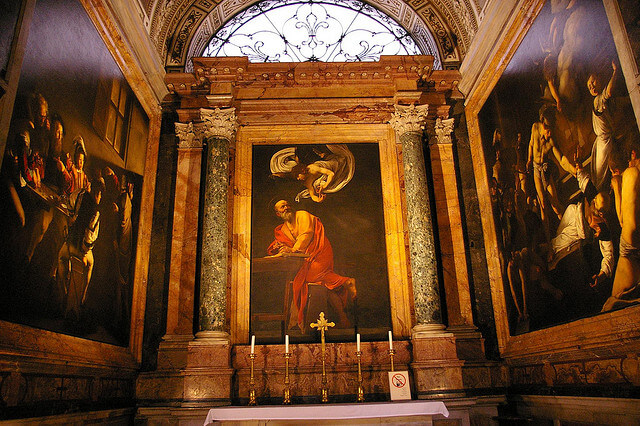
Starting on the left side, The Calling of St. Matthew depicts the very moment when Christ chooses Matthew to follow him. Instead of the familiar imagery of angels from Renaissance art, Caravaggio used light to depict the importance of the moment and its connection to something holy. The naturalism that Caravaggio became known for is apparent here–notice the incredible way in which the contrasts between shadows and light give the figures three-dimensionality and how each person has a unique face.
In the middle is The Inspiration, also known as Matthew and the Angel.
This is my favorite of the three paintings. Here we see St. Matthew receiving inspiration from an angel, who has swooped down and surprised Matthew while he is busy writing. We can sense the surprise not only in Matthew’s face, but also because of the way his stool appears to be ready to fall over into our space. The entire scene is dark except for the figures that boldly stand out against the black background. The flowing drapery and colors of Matthew’s robes add beauty to the scene.
We can see how this canvas was meant to be placed in this chapel. Instead of seeing the painting on wall in a museum, its original place gives us a sense of how the painting was meant to relate to the space around it and serve the purpose of providing religious imagery for the patron.
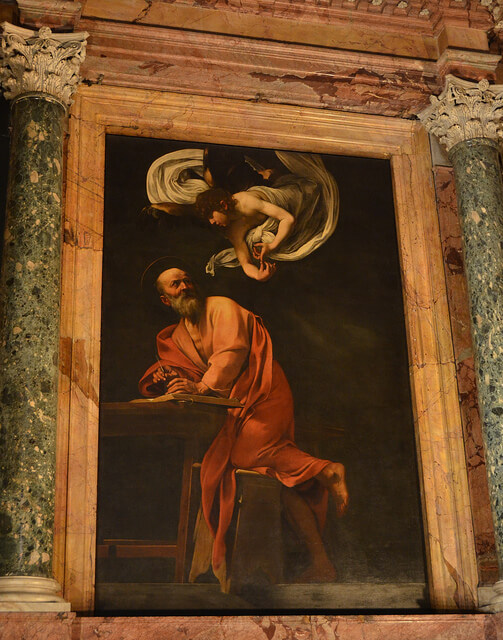
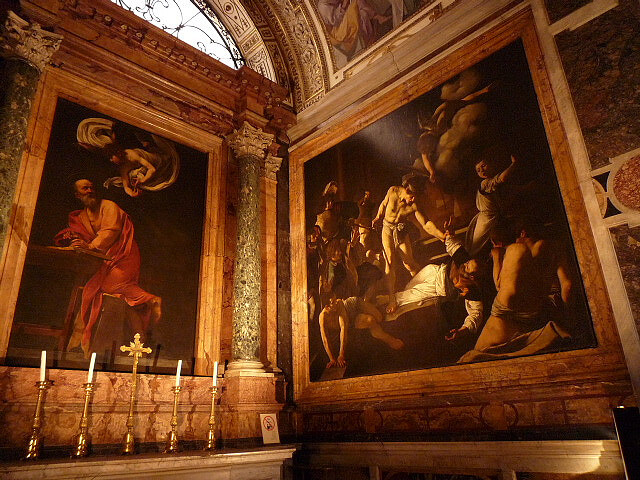
The third image is The Martyrdom of St. Matthew. Its position opposite of The Calling of Matthew reflects the full circle of his life as a saint. Caravaggio used the technique of tenebrism mentioned above to focus the viewer on the most important part of the scene–the moment before the executioner uses the sword.
By the way, Caravaggio painted the man in the back left, behind the executioner, as a self portrait.
Caravaggio’s work is dramatic and beautiful at the same time. Seeing them in the church of San Luigi dei Francesi gives you a feeling for how the art was meant to be part of the space and connects it to the role of the all-important patrons of the time. While seeing art in a museum is wonderful, experiencing it in its original location is definitely worth your time.
Where have you seen painting that’s not in a museum? Have you seen Caravaggio’s paintings in person?

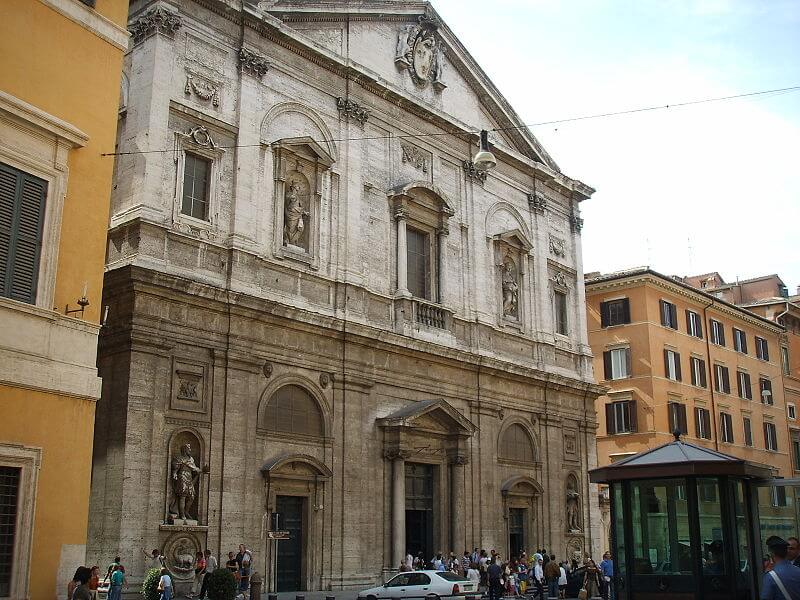
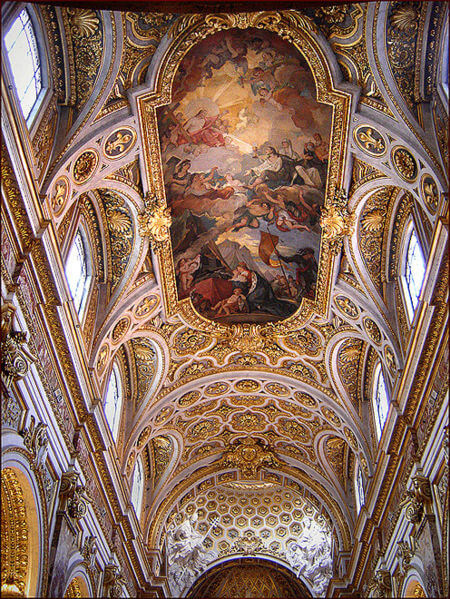
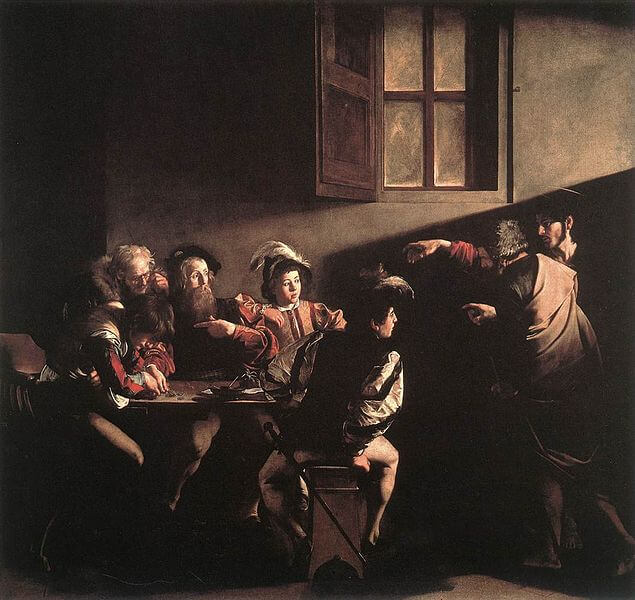
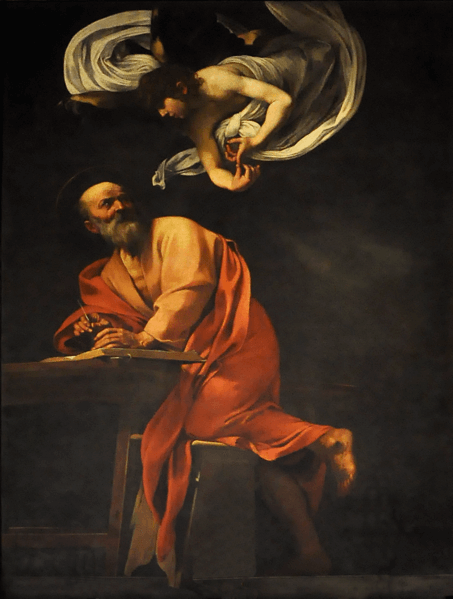
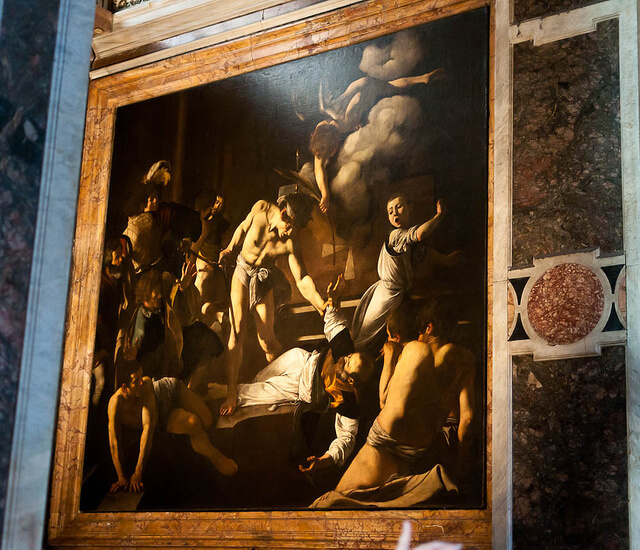
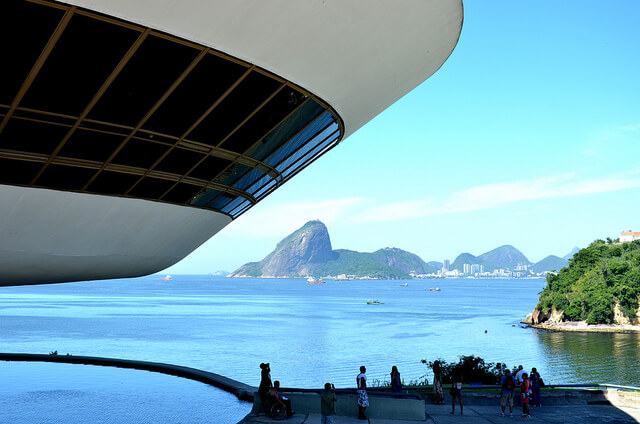

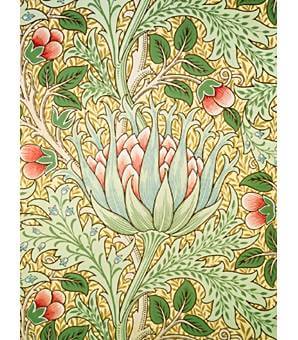
I was lucky to have been able to see a Caravaggio exhibit at the Uffizi while I was there in 2010. Although you’re right, I didn’t get to spend much time with his famed chiaroscuro works because of the amount of people behind me and in front of the paintings.
I did get to see the Medusa shield which is a favourite of mine and there’s something about the violence of his works that is obviously jarring but still draws me in. Probably, like you said, his use of light and dark contrasts.
My favourite place to see art in the location it was commissioned to hang and be presented is in Venice at the Frari church. It can be a busy place depending on when you want to go but Canova’s tomb is one of my all time favourites.
Well done!
Murissa
I am thrilled that you selected Caravaggio for this month’s edition! I am a big fan of his dramatic paintings and love the way he draws our attention to the figures he portrays with light and shadow! Exquisite photography my friend too!!!
Thanks, Jeff. His paintings are one thing that I would like to see again in Italy. It has been many years since I have seen them in person.
It adds a lot to the experience to see religious art in the location it was created for, rather than a museum. On my first trip to Italy, I had a long list of churches and works to see, spent endless days peacefully hunting them down. I love the contemporary setting of the Calling of St. Matthew, it’s so much like a photograph it gives me the shivers. Love Caravaggio!
I like how you described the Calling of St. Matthew. It does look like a photo and yes, the setting really evokes daily life of 16th century Italy even though it depicts a scene from a different place and from so many years before.
LOVE Caravaggio! I’ve always admired his chiarascuro (just like why I love Rembrandt) mixed with his touch of subversiveness. His paintings are so dynamic and rich.
While in Rome, I stuck to mainly churches and monuments. The only museum I visited was the Vatican, and I think it made the trip so much more enjoyable to skip a lot of the crowded palazzo museums.
My first sample of any ArtSmart posts and I’m glad I found it. Really great information here and I will be making my way to see these three pieces by Caravaggio this week. Thank you! 🙂
So glad you found the ArtSmart posts 🙂 I hope you find it useful–the only issue with seeing these pieces in the church is that it can be dark, but there used to be a light that you can pay for. It must still be like that. I’m off to read your pasta post now!
What a fun post! That photo of the right, Martyrdom panel is especially good with its cold natural light complimenting his own sharp light. I’m always flabbergasted at how he crams 13 characters into that one and makes it perfectly natural. As you point out, seeing it in its context from the side, keeps Caravaggio’s perspective as he meant it.
I think my fave Caravaggio in place is around the corner from St Luigi — it’s the Renaissance church of St Agostino (the one with the Raphael fresco on the 3L pillar and a Lanfranco night scene in the back). That Caravaggio is the Madonna di Loretto, with Baby X in her arms and two peasants on their knees on her doorstep. One of the peasant’s feet (thrust in the viewer’s foreground) are dirty, getting Caravaggio in trouble. But what I’ve always liked about this painting is that the peasant’s khaki pants cuff on his left leg just blends into his skin color. As a child I remember turning it over and over in my head as to whether Caravaggio was brilliant and entertaining church-goers who didn’t want to have to be there (kids) OR whether C was stupid and just forgot to paint the cuff of his pants.
Anyway, sorry for such a long entry and thank you for a little visit to Rome! Love the ArtSmart series!
Best,
Daisy
Thanks for the comment! I will have to look into the church you reference here. I am sure I’ve been there but can’t remember it right now.
I’m so very pleased to learn about the Carravaggios in Rome … I hope to go next week to expernce them in person.
I hope you do, too! They are a lesser-known but worthy thing to see in Rome.